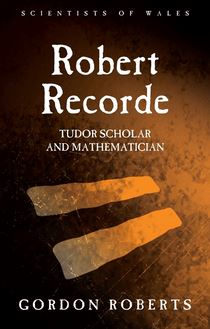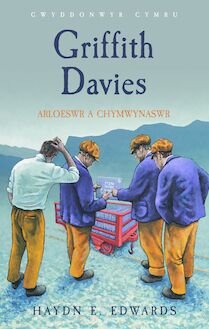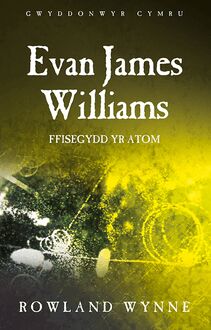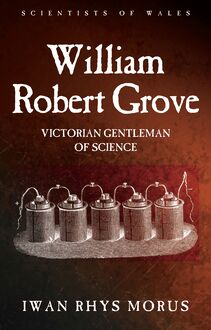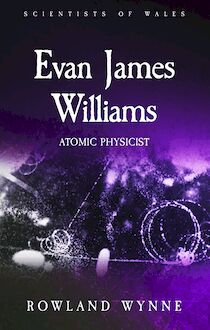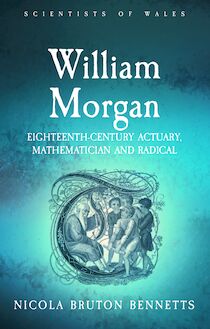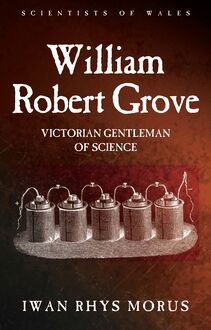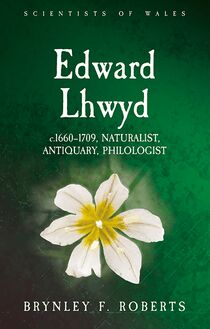Robert Recorde , livre ebook
120
pages
English
Ebooks
2016
Vous pourrez modifier la taille du texte de cet ouvrage
Obtenez un accès à la bibliothèque pour le consulter en ligne En savoir plus
Découvre YouScribe en t'inscrivant gratuitement
Découvre YouScribe en t'inscrivant gratuitement
120
pages
English
Ebooks
2016
Vous pourrez modifier la taille du texte de cet ouvrage
Obtenez un accès à la bibliothèque pour le consulter en ligne En savoir plus
Publié par
Date de parution
15 mai 2016
Nombre de lectures
2
EAN13
9781783168316
Langue
English
This enthralling biography tells, for the first time, the complete story of one of Tudor England’s most enigmatic figures. A Welshman born in Tenby, south Wales, c.1512, Robert Recorde was educated at both Oxford and Cambridge. This book, the first detailed biography of this Tudor scholar, reviews the many facets of his astonishingly wide-ranging career and ultimately tragic life. It presents a richly detailed and fully rounded picture of Recorde the man, the university academic and theologian, the physician, the mathematician and astronomer, the antiquarian, and the writer of hugely successful textbooks. Crown appointments brought Recorde into conflict with the scheming Earl of Pembroke, and eventually set him at odds with Queen Mary I. As an intellectual out of his depth in political intrigue, beset by religious turmoil, Recorde eventually succumbed to the dangers that closed inexorably around him.
Author’s Forward and Acknowledgments
Prologue
Chapter 01 – Child of Tenby
Chapter 02 – Oxford Scholar
Chapter 03 – Cambridge Savant
Chapter 04 – Such is Your Authority
Chapter 05 – St Paul’s Churchyard
Chapter 06 – Doctor Recorde
Chapter 07 – Antiquarian and Mathematician
Chapter 08 – No Mean Divine
Chapter 09 – Comptroller of the King’s Mints
Chapter 10 – The Muscovy Company
Chapter 11 – This Talk Delights Me Marvellously
Chapter 12 – Pedagogue and Poet
Chapter 13 – Surveyor of the Mines and Monies
Chapter 14 – Nemesis
Chapter 15 – A Heart So Oppressed
Chapter 16 – An Unquiet Mind
Chapter 17 – One of His Elect in Glory
Epilogue
Publié par
Date de parution
15 mai 2016
Nombre de lectures
2
EAN13
9781783168316
Langue
English
SCIENTISTS OF WALES
Series Editor Gareth Ffowc Roberts Bangor University
Editorial Panel Iwan Rhys Morus Aberystwyth University
John V. Tucker Swansea University
SCIENTISTS OF WALES
Robert
Recorde
TUDOR SCHOLAR AND MATHEMATICIAN
GORDON ROBERTS
UNIVERSITY OF WALES PRESS 2016
© Gordon Roberts, 2016
All rights reserved. No part of this book may be reproduced in any material form (including photocopying or storing it in any medium by electronic means and whether or not transiently or incidentally to some other use of this publication) without the written permission of the copyright owner except in accordance with the provisions of the Copyright, Designs and Patents Act 1988. Applications for the copyright owner’s written permission to reproduce any part of this publication should be addressed to the University of Wales Press, 10 Columbus Walk, Brigantine Place, Cardiff CF10 4UP.
www.uwp.co.uk
British Library Cataloguing-in-Publication Data A catalogue record for this book is available from the British Library.
ISBN 978-1-78316-829-3 (hardback)
978-1-78316-854-5 (paperback)
eISBN 978-1-7831-6831-6
The right of Gordon Roberts to be identified as author of this work has been asserted in accordance with sections 77, 78 and 79 of the Copyright, Designs and Patents Act 1988.
Publication of Robert Recorde: Tudor Scholar and Mathematician has been made possible with grant assistance from Tenby Museum and Art Gallery.
CONTENTS
Series Editor’s Foreword
List of Illustrations
Preface and Acknowledgments
Genealogy of Robert Recorde Physician
Prologue
1 Child of Tenby
2 Oxford Scholar
3 Cambridge Savant
4 Such is Your Authority
5 St Paul’s Churchyard
6 Doctor Recorde
7 Antiquarian and Mathematician
8 No Mean Divine
9 Comptroller of the King’s Mints
10 The Muscovy Company
11 This Talk Delights Me Marvellously
12 Pedagogue and Poet
13 Surveyor of the Mines and Monies
14 Nemesis
15 A Heart So Oppressed
16 An Unquiet Mind
17 One of His Elect in Glory
Epilogue
Notes and References
Select Bibliography
SERIES EDITOR’S FOREWORD
W ales has a long and important history of contributions to scientific and technological discovery and innovation stretching from the Middle Ages to the present day. From medieval scholars to contemporary scientists and engineers, Welsh individuals have been at the forefront of efforts to understand and control the world around us. For much of Welsh history, science has played a key role in Welsh culture: bards drew on scientific ideas in their poetry; renaissance gentlemen devoted themselves to natural history; the leaders of early Welsh Methodism filled their hymns with scientific references. During the nineteenth century, scientific societies flourished and Wales was transformed by engineering and technology. In the twentieth century the work of Welsh scientists continued to influence developments in their fields.
Much of this exciting and vibrant Welsh scientific history has now disappeared from historical memory. The aim of the Scientists of Wales series is to resurrect the role of science and technology in Welsh history. Its volumes trace the careers and achievements of Welsh investigators, setting their work within their cultural contexts. They demonstrate how scientists and engineers have contributed to the making of modern Wales as well as showing the ways in which Wales has played a crucial role in the emergence of modern science and engineering.
RHAGAIR GOLYGYDD Y GYFRES
O ’r Oesoedd Canol hyd heddiw, mae gan Gymru hanes hir a phwysig o gyfrannu at ddarganfyddiadau a menter gwyddonol a thechnolegol. O’r ysgolheigion cynharaf i wyddonwyr a pheirianwyr cyfoes, mae Cymry wedi bod yn flaenllaw yn yr ymdrech i ddeall a rheoli’r byd o’n cwmpas. Mae gwyddoniaeth wedi chwarae rôl allweddol o fewn diwylliant Cymreig am ran helaeth o hanes Cymru: arferai’r beirdd llys dynnu ar syniadau gwyddonol yn eu barddoniaeth; roedd gan wŷr y Dadeni ddiddordeb brwd yn y gwyddorau naturiol; ac roedd emynau arweinwyr cynnar Methodistiaeth Gymreig yn llawn cyfeiriadau gwyddonol. Blodeuodd cymdeithasau gwyddonol yn ystod y bedwaredd ganrif ar bymtheg, a thrawsffurfiwyd Cymru gan beirianneg a thechnoleg. Ac, yn ogystal, bu gwyddonwyr Cymreig yn ddylanwadol mewn sawl maes gwyddonol a thechnolegol yn yr ugeinfed ganrif.
Mae llawer o’r hanes gwyddonol Cymreig cyffrous yma wedi hen ddiflannu. Amcan cyfres Gwyddonwyr Cymru yw i danlinellu cyfraniad gwyddoniaeth a thechnoleg yn hanes Cymru, â’i chyfrolau’n olrhain gyrfaoedd a champau gwyddonwyr Cymreig gan osod eu gwaith yn ei gyd-destun diwylliannol. Trwy ddangos sut y cyfrannodd gwyddonwyr a pheirianwyr at greu’r Gymru fodern, dadlennir hefyd sut y mae Cymru wedi chwarae rhan hanfodol yn natblygiad gwyddoniaeth a pheirianneg fodern.
LIST OF ILLUSTRATIONS Genealogy of Robert Recorde Figure 1 Tenby, Robert Recorde’s birthplace Figure 2 Recorde’s table of English coins Figure 3 St John’s College, Cambridge Figure 4 A urinal, the glass vessel used for the examination of urine Figure 5 Recorde’s table for multiplying digits Figure 6 Numbering by the hand Figure 7 The Norman Cathedral of St Paul’s Figure 8 Parish of St Katherine Coleman, circa 1550 Figure 9 Recorde’s list of medicines for kidney stones Figure 10 A typical doctor of the Tudor period Figure 11 Recorde’s exposition of Pythagoras’s Theorem Figure 12 VDMIE, the cryptic slogan of the Protestant Schmalkaldic League Figure 13 Sir William Sharington, Undertreasurer of the Bristol Mint Figure 14 The Castle of Knowledge, atop of which sits Ptolemy Figure 15 Geometry’s verdict Figure 16 Ore Stamping Mill and Melting House Figure 17 Sir William Herbert, first Earl of Pembroke Figure 18 Recorde’s second part of arithmetic Figure 19 Recorde’s table of algebraic symbols Figure 20 Recorde devises the sign for equality Figure 21 Recorde’s discussion of ‘climates’, or time zones Figure 22 The false portrait of Robert Recorde.
Picture Credits
Figure 1 : View of Tenby by Eric Bradforth, reproduced with the permission of Tenby Museum and Art Gallery.
Figures 2 , 4 , 5 , 6 , 9 , 10 , 11 , 12 , 14 , 15 , 18 , 19 , 20 , 21 : pages from the extant works of Robert Recorde, reproduced by courtesy of TGR Renascent Books.
Figures 3 , 7 , 8 , 13 , 16 , 17 : public domain images from Wiki Commons. Figure 22 : The Bushell portrait, reproduced with the permission of the Faculty of Mathematics, University of Cambridge.
PREFACE AND ACKNOWLEDGMENTS
R obert Recorde’s extant works are printed in Early Modern English, the stage of the English language used from the beginning of the Tudor period until the transition to Modern English during the mid-seventeenth century. The orthography of Early Modern English was similar to that of today, but spelling was unstable. Early printers regarded the letters ‘i’ and ‘j’ as interchangeable variations of the same letter, and similarly the letters ‘u’ and ‘v’ were not considered distinct or separate. The use of the long form of the letter ‘s’, which modern readers often confuse with the letter ‘f’, can be particularly troublesome. Printers often made use of abbreviations not found in modern books, and capitalisation, punctuation and hyphenation were usually haphazard. All this can make reading Early Modern English tiresome for anyone unaccustomed to sixteenth-century spellings and typographical conventions.
Accordingly, in the following pages I have transcribed the many quotations from Recorde’s texts into modern English, as regards both spelling and punctuation. I have not altered Recorde’s phrasing, often peculiar to his times, but have sometimes retained easily understood spellings such as ‘hath’ instead of ‘has’, ‘doth’ instead of ‘does’, and so on. All quotations are taken from the first editions unless otherwise indicated. Anyone desirous of reading Recorde’s original texts can easily do so nowadays by consulting the readily available facsimile editions of his works listed in the bibliography. I have used the same method of transcription when quoting from other sources originating in the same time period as Recorde’s texts.
In attempting this biography, which is an avowed work of synthesis, I have drawn on the researches of many dedicated scholars. A book like this could not have been written without their work and I am immensely grateful for the labours and insights of others who have previously traversed this particular historical terrain. I am particularly indebted to the late Professor David Eugene Smith and the late Frances Marguerite Clark for their invaluable efforts in uncovering aspects of Recorde’s life and works previously unknown. I have drawn heavily on the unpublished dissertations of Edward Kaplan and Thavit Sukhabanji, to whom I also offer my grateful thanks.
More recently, the scholarly book on Recorde by Jack Williams has revealed new insights and proved to be an inspiration, as has the series of essays by various authors edited into book form by Gareth Roberts and Fenny Smith. To them all I extend sincere thanks. Jo Maddocks of the British Library Rare Books Department, Gill Cannell of the Parker Library, Corpus Christi College, Paul Cox of the National Portrait Gallery and Sue Baldwin † of Tenby Museum and Art Gallery have all been unstinting in their efforts on my behalf. To them I also offer wholehearted thanks. The medievalist Jonathan Mackman has been meticulous in transcribing documents, from both the British Library and the National Archives, written in sixteenth-century handwriting which I found impossible to decipher myself. His skilled and knowledgeable expertise has been of the utmost value. My wife Elizabeth has read and reread my many manuscript drafts and her constructive criticisms have made this a better book. Without her constant support and infectious enthusiasm, not to mention innumerable cups of tea, I doubt whether this book would ever have been completed. The responsibility for errors
